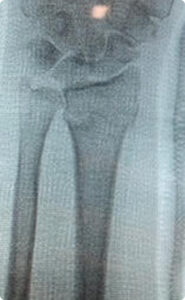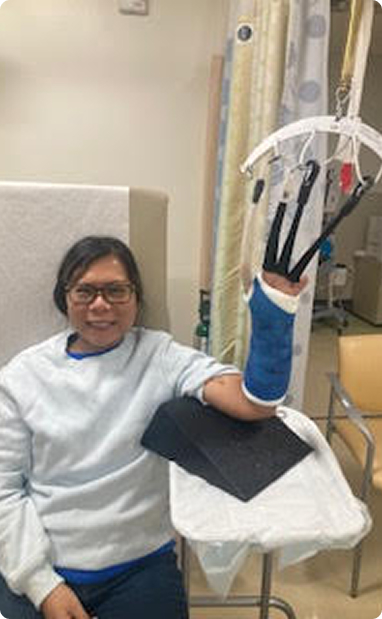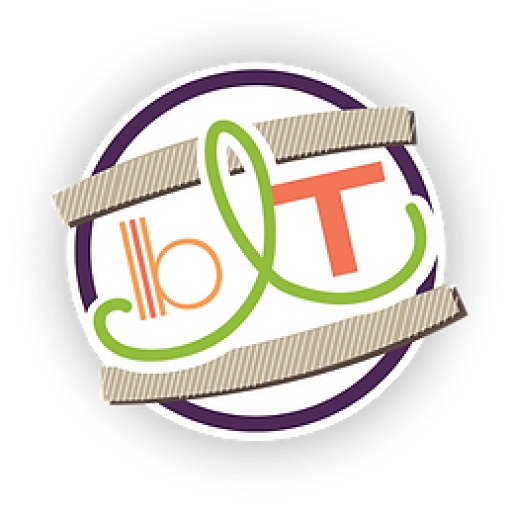A week ago, when I was walking my dog, I slipped and fell on ice. Immediately, I knew I broke my wrist. I fractured my distal radius. A distal radius fracture occurs when the radius bone near the wrist breaks, often due to a fall onto an outstretched hand. This injury can significantly impact a person’s ability to perform daily activities, especially when using one hand.
Reflecting on my injury, I used my knowledge and skills as an occupational therapist to perform my daily activities using one hand. These strategies can also be used for children and or adults who have physical disabilities or temporary injuries like my current injury. Some individuals may have limited use of one hand due to medical diagnoses, such as cerebral palsy, stroke or amputations.
It is essential to develop strategies that enable individuals to adapt their tasks and maintain independence during recovery or when facing physical disabilities.
Strategies and Techniques:
- Adaptive Equipment: Tools designed for one-handed users can greatly assist in daily tasks. For instance, using a long-handled bath sponge allows individuals to wash hard-to-reach areas, like the back or opposite arm, without straining.
- Modified Grip Techniques: Stabilizing objects using the body or other limbs can help manage tasks. For example, a light object can be placed between the knees while using one hand to open a bag. Similarly, teeth can be used to hold an item steady while unzipping.
- Leverage and Balance: Utilizing leverage simplifies tasks. A person might use a wall-mounted hook to pull up sleeves or press their phone against a surface to plug in a charger.
- Task Simplification: Breaking tasks into manageable steps can enhance efficiency. When brushing teeth, one can squeeze toothpaste onto the brush while resting it on the sink, then use one hand for brushing.
- Using a Computer: Voice-to-text software is invaluable for those who type frequently. It reduces the need for extensive typing, allowing easier report writing and note-taking.
- Donning and Doffing Upper Extremity Clothing: Choosing clothing with elastic bands or simple fasteners eases the dressing process. When putting on or taking off clothing, especially for individuals with an affected arm, it’s important to follow specific steps to make the process easier and more comfortable.
- T-shirts:
- Putting on: Start by slipping the T-shirt over the affected arm first. This allows for easier maneuvering and reduces strain. Once the affected arm is in, pull the shirt over the head and then insert the unaffected arm.
- Taking off: When removing the T-shirt, reverse the process. First, take off the sleeve of the unaffected arm, and then gently pull the shirt over your head and then the sleeve off the affected arm.
- Button-up Shirts:
- Putting on: Open the shirt completely so that it lays flat. Begin by inserting the affected arm into the sleeve. Once that arm is in, follow by putting the unaffected arm into its sleeve.
- Taking off: To remove a button-up shirt, unbutton it first and take out the unaffected arm. Finally, slide the affected arm out of the sleeve
The techniques outlined above demonstrate how individuals, whether recovering from an injury or managing a disability, can maintain independence through adaptive strategies. By utilizing adaptive equipment, modified grip techniques, leverage, task simplification, and appropriate clothing choices, one can effectively navigate daily activities with one hand. These strategies not only help in recovery but also empower individuals to lead fulfilling lives despite their challenges. I hope you find this helpful as they are for me!



My dog, Muffin, who I love very much!
X-ray shows that my bones are in alignment, thus requiring conservative treatment via immobilization for 4-6 weeks.
(These finger stretchers help keep my fingers in extension while getting cast on.)

